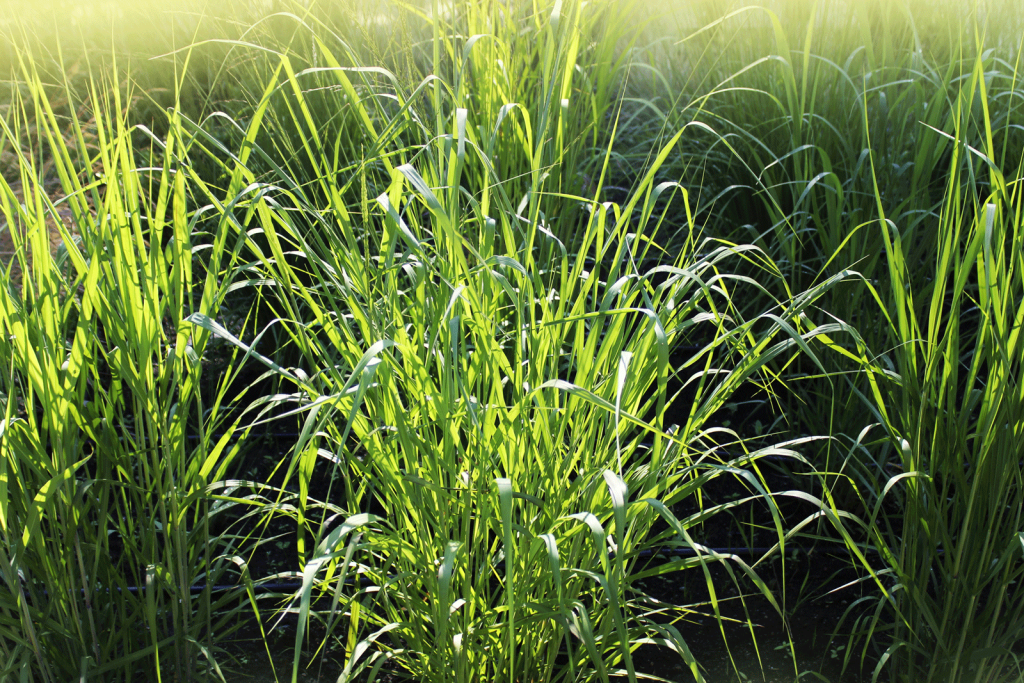
Explore alternative applications of native grasses in landscaping, biofuel production, and erosion control.
Native grasses are a cornerstone of Conservation Reserve Program (CRP) projects—but their usefulness goes far beyond conservation contracts. With their deep roots, adaptability, and natural beauty, native grasses are gaining popularity in landscaping, renewable energy, and land restoration efforts across the country.
At All Native Seed, we’ve helped landowners and professionals establish native grasses for CRP success, but we also recognize the growing potential of these species in innovative, sustainable applications. Let’s explore some of the most exciting ways native grasses are being used outside of CRP.
Low-Maintenance Landscaping with Native Grasses
As water restrictions, mowing costs, and environmental awareness reshape landscaping trends, more homeowners, municipalities, and commercial properties are turning to native grasses for a natural, low-maintenance alternative to traditional turf.
Drought Tolerance: Native grasses like Little Bluestem (Schizachyrium scoparium) and Sideoats Grama (Bouteloua curtipendula) thrive in dry conditions, reducing the need for irrigation.
Year-Round Beauty: These grasses provide visual interest throughout the seasons, with changing colors, plumes, and textures.
Biodiversity Boost: Unlike conventional lawns, native grass landscapes support pollinators, birds, and beneficial insects.
From residential backyards to corporate campuses, native grasses are redefining the look and feel of sustainable landscaping.
Erosion Control on Slopes, Ditches, and Roadsides
Native grasses are exceptionally effective at stabilizing soil, making them ideal for erosion-prone areas like embankments, ditches, streambanks, and construction sites. Their deep, fibrous root systems help anchor soil in place, even on steep slopes or in areas prone to runoff.
- Switchgrass (Panicum virgatum) and Big Bluestem (Andropogon gerardii) are especially suited for erosion control due to their robust root structures.
- Native grasses improve water infiltration, reducing surface runoff and sediment loss.
- Their resilience to drought and poor soil conditions makes them perfect for land reclamation and disturbed site restoration.
Native grass plantings are often used by transportation departments, utility companies, and developers seeking sustainable and cost-effective erosion control solutions.
Biofuel Production and Renewable Energy
As the demand for renewable energy grows, native grasses (particularly warm-season species) are emerging as a viable source of cellulosic biofuel. These grasses offer high biomass yields, minimal input requirements, and environmental benefits that set them apart from traditional energy crops.
- Switchgrass has received national attention as a leading native bioenergy crop. It produces large volumes of biomass and can grow on marginal lands unsuitable for food crops.
- Native grasses used for biofuel can simultaneously provide wildlife habitat, reduce erosion, and improve soil health.
- Because they are perennial, these grasses require fewer tilling and planting cycles, reducing emissions and improving carbon sequestration.
Biofuel production from native grasses is an exciting avenue for sustainable energy development while maintaining ecological integrity.
Green Infrastructure and Urban Applications
Cities and towns are discovering how native grasses can enhance green infrastructure projects such as:
Rain gardens and bioswales: Native grasses help capture and filter stormwater runoff.
Green roofs and urban meadows: Improve insulation, manage stormwater, and provide habitat in dense urban areas.
Permeable landscape buffers: Reduce pollution and support biodiversity in parks, campuses, and along roads.
By incorporating native grasses into urban design, municipalities can create more livable, climate-resilient spaces that are both functional and beautiful.
Agricultural Integration: Pasture & Forage Uses
Some native grass species can also be used as forage for livestock, particularly in rotational grazing systems that prioritize soil health and long-term productivity.
- Species like Eastern Gamagrass and Indiangrass provide nutrient-rich forage during summer months when cool-season pastures may go dormant.
- Native grasses enhance pasture diversity, reduce erosion, and extend grazing windows.
- They integrate well into regenerative agriculture systems focused on building soil health and reducing chemical inputs.
Landowners seeking sustainable livestock practices are increasingly turning to native forage species to support both production and ecological goals.
Partnering with All Native Seed for Your Native Grass Needs
At All Native Seed, we specialize in more than CRP solutions – we offer high-quality, tested native grass seed for a wide range of applications:
- Erosion control seed mixes
- Low-maintenance landscape blends
- Biofuel-ready species like Switchgrass
- Pasture and forage planning support
- Regionally adapted native mixes for urban and rural projects
With over 400,000 acres of successful native plantings, we bring the expertise, product quality, and customer support needed to make your project a success.
Plant with Purpose
Native grasses are versatile, resilient, and essential for restoring and maintaining ecological health across diverse landscapes. Whether you’re building a pollinator garden, managing erosion, producing renewable energy, or beautifying your property, native grasses offer a sustainable solution with long-term benefits.
Ready to explore native grasses for your next project? Contact All Native Seed today for expert recommendations and premium seed that’s built for performance and environmental impact.
